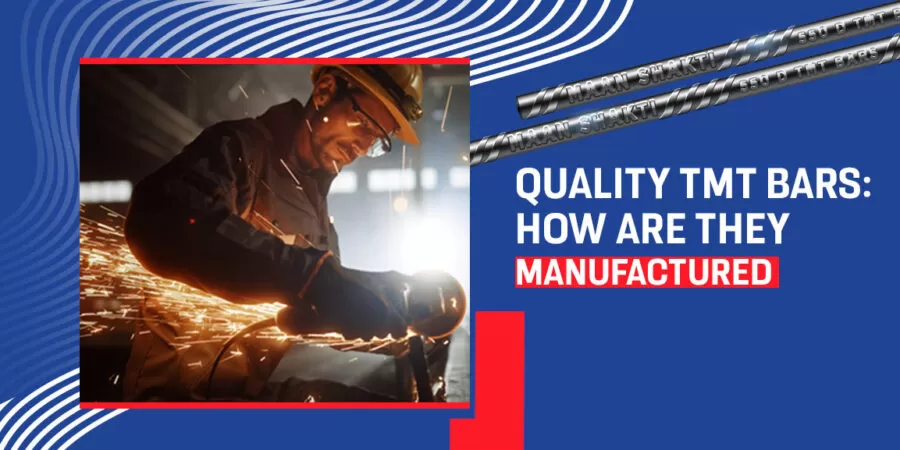Have you ever given a thought about how quality TMT bars are manufactured? Here’s a quick guide to inform you of the TMT bar manufacturing process.
TMT or thermomechanical treatment is a special process involved in the production of quality TMT bars. The process involved creates a temperature gradient between the inner and outer layers of the bar. The inner core remains hot while the outer surface cools. The special pearlite-ferrite inner core encased in tempered martensite is what gives TMT bars the strength, flexibility, corrosion resistance, and earthquake-resistant properties that these bars are well-known for.
The top TMT Bar manufacturers in West Bengal always follow a standard process to create strong bars that provide high durability and ductility compared to conventional steel bars.
Stages Involved in TMT Bar Manufacturing
The quality of the finished TMT bars can depend on a lot of factors, such as material quality, the rolling mill used for shaping the material, or the equipment used for the quenching and tempering process. All TMT bars are manufactured through the following stages:
Sourcing Raw Materials
The first step consists of sourcing raw materials such as coal, iron ore, dolomite, etc. Selecting the right source for iron ore is extremely important as this material forms the crux of TMT bars. Usually, iron ore is obtained from iron scraps. Iron scrap is collected, sorted, and then processed using an arc furnace, oxygen furnace, or the modern induction furnace to adjust the steel composition. The final composition of the steel is gauged, and certain chemicals can be added or removed.
Primary and Secondary Steel-making
Next, steel billets are formed. Molten steel is transferred into a ladle and then transferred into a continuous casting process. The process consists of pouring the molten steel into moulds, which turn the metal into long, rectangular steel billets. Next, the billets are run through rolling mills, which reduces the thickness of the steel.
Quenching
After the hot rolled bar leaves the final mill stand (including roughing and intermediate finishing stands), it is passed through a water quenching system. This is a system where water sprays on the surface of the bars and causes the surface of the rebars to cool and harden rapidly. This process makes the outer surface hard while keeping the inner core soft and malleable and contributes to the flexibility of the rebars.
Tempering
After passing through the quenching system, the core of the rebars remains hot and, due to the temperature gradient formed, continues to supply heat to the surface. This leads to the tempering of the outer layer into a structure called tempered martensite.
Air Cooling
Finally, the rebars are cooled at room temperature. For that purpose, the bars are passed through special cooling beds. This makes the core to cool down to room temperature.
In short, these are the stages to manufacture quality TMT rebars. All top TMT Bar manufacturers in West Bengal follow these steps to produce strong, resilient, and flexible bars that stand the test of time and harsh weather conditions.
Conclusion
The above-mentioned are the steps to produce quality TMT bars. These steps, when followed, produce bars that are strong and flexible and show properties that protect your structure from damage due to natural forces.
It’s best to source your TMT bars from reputed brands like Maan Shakti because they follow all the steps rigorously and use only the best raw materials to produce quality TMT bars. With Maan Shakti, you can even Bulk Order TMT Bar Online. So, you have the provision of getting the best TMT bars at your convenience. Use the best quality TMT bars to create structures that stand strong and last long.


Leave a Reply